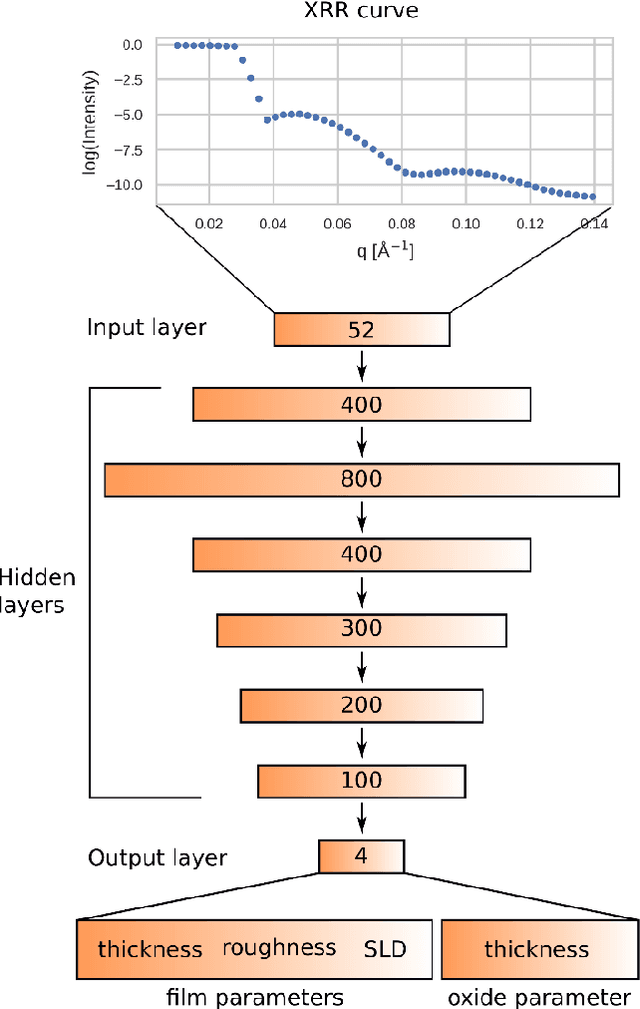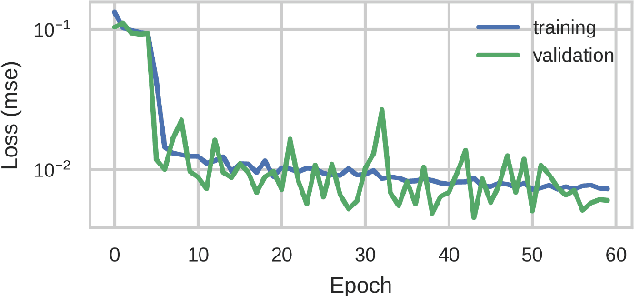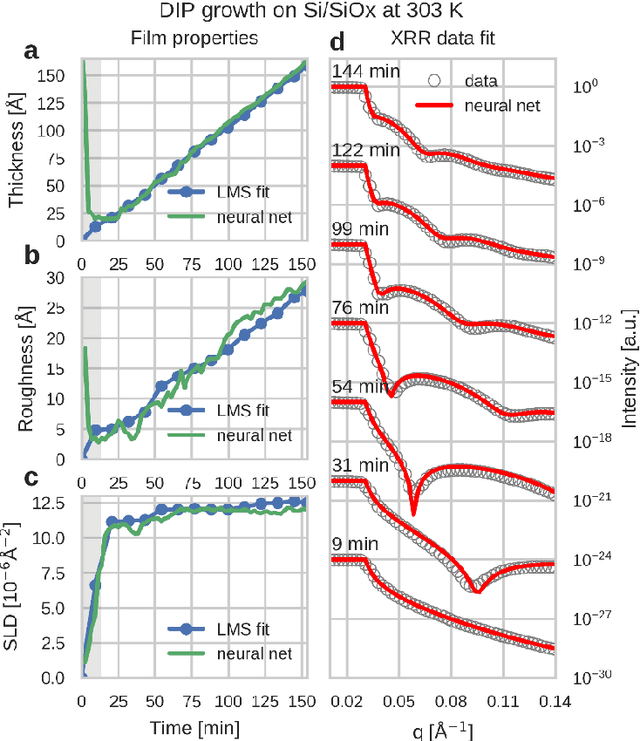Sascha Liehr
Fast Fitting of Reflectivity Data of Growing Thin Films Using Neural Networks
Oct 07, 2019



Abstract:X-ray reflectivity (XRR) is a powerful and popular scattering technique that can give valuable insight into the growth behavior of thin films. In this study, we show how a simple artificial neural network model can be used to predict the thickness, roughness and density of thin films of different organic semiconductors (diindenoperylene, copper(II) phthalocyanine and $\alpha$-sexithiophene) on silica from their XRR data with millisecond computation time and with minimal user input or a priori knowledge. For a large experimental dataset of 372 XRR curves, we show that a simple fully connected model can already provide good predictions with a mean absolute percentage error of 8-18 % when compared to the results obtained by a genetic least mean squares fit using the classical Parratt formalism. Furthermore, current drawbacks and prospects for improvement are discussed.
Deep Eyedentification: Biometric Identification using Micro-Movements of the Eye
Jul 04, 2019



Abstract:We study involuntary micro-movements of the eye for biometric identification. While prior studies extract lower-frequency macro-movements from the output of video-based eye-tracking systems and engineer explicit features of these macro-movements, we develop a deep convolutional architecture that processes the raw eye-tracking signal. Compared to prior work, the network attains a lower error rate by one order of magnitude and is faster by two orders of magnitude: it identifies users accurately within seconds.
 Add to Chrome
Add to Chrome Add to Firefox
Add to Firefox Add to Edge
Add to Edge